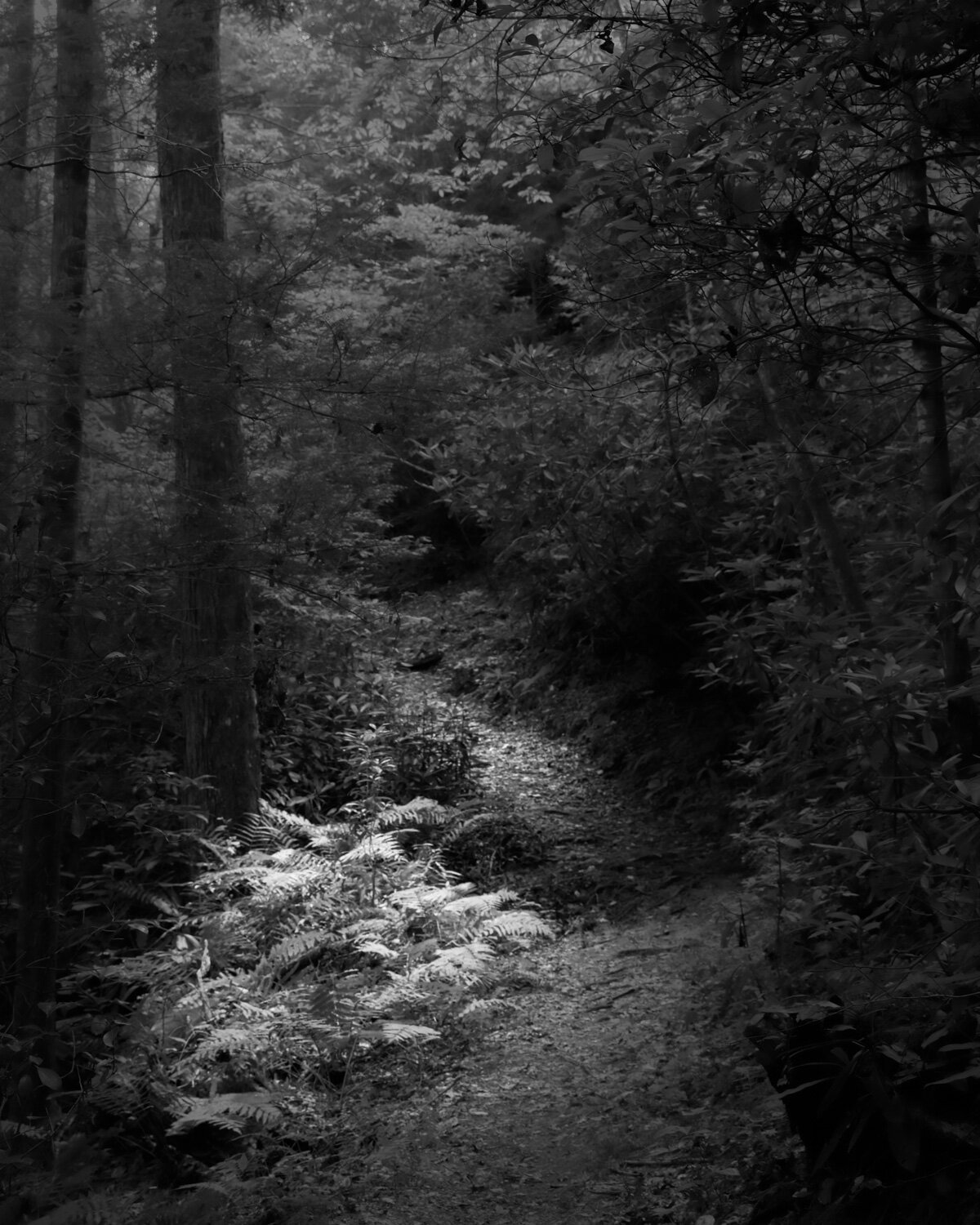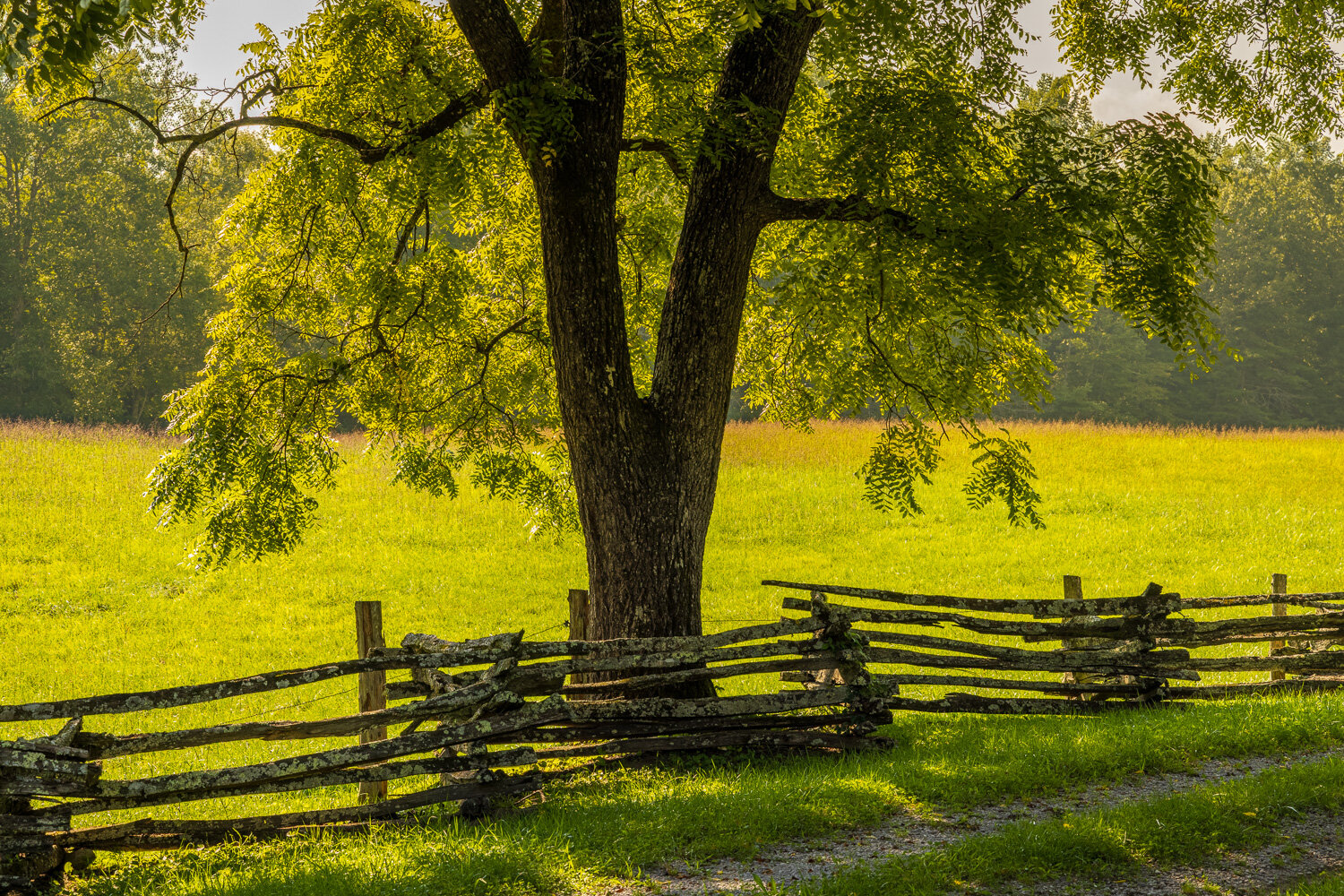In May, I posted some images from the Big South Fork National River and Recreation Area which sits in the Cumberland Plateau in Eastern Tennessee and Kentucky. When visiting the area again last month, I stopped at the Bandy Creek Ranger Station for some ideas on where to visit. I asked about the Oscar Blevins Historic Farmstead that I saw on the map. The ranger told me about it and gave driving directions, but then added there was a loop trail from the other side of the ranger station parking lot that went through the woods to the farmstead. He gave me a brochure about the route, and off we went.
“And dark, dim in the blue haze”
The trail starts along Bandy Creek. The trail brochure speculated as the origin on the name. Apparently, an early 18th century family started a farm nearby, but soon abandoned it—or in the local dialect — “bandoned” it. The bandoned area eventually was called Bandy.
“There, in blotched and cobwebbed light”
Some sandstone cliffs rise a bit above the creek. Archeologists determined that over many centuries natives took temporary shelter under some of the overhangs, but no tribes ever established long-term residence in the area. The land was not too fertile or hospitable for permanent settlement.
“where the Indian village was once”
After winding through the woods for a couple miles, the trail comes to a “bandoned” road where if you search carefully there is evidence of a family cemetery and later Blevins farmhouses, but eventually, the woods give way to the 24 acre main Blevins farmstead.
“The meadow is bright as snow”
Perhaps you’ve noticed the titles to the images. They come from some lines of The Signature of All Things, a 1949 poem by Kenneth Rexroth. He was a conscientious objector during WWII, and was called “the Daddy of the Beat Generation.” He was charged by an academic critic as belonging to the “bear-shit-on-the-trail school of poetry,” which Rexroth took as a compliment. So, a bit from the poem:
. . . .
The meadow is bright as snow.
My dog prowls the grass, a dark
Blur in the blur of brightness.
I walk to the oak grove where
The Indian village was once.
There, in blotched and cobwebbed light
And dark, dim in the blue haze,
Are twenty Holstein heifers,
Black and white, all lying down,
Quietly together, under
The huge tree rooted in the graves.
. . . .
Kenneth Rexroth, from The Signature of All Things, 1949
“I walk to the oak grove”
The image above is from where the trail first opens to the farmstead. The old fence line leads to the “new” farmhouse that was built in the 1950s. The Big South Fork NRRA was authorized in 1974, and began acquiring some of the land in the area. The Blevins began this subsistence farm in the 1870s. As with most of the farms in the rugged Upper Cumberland, farming was never much more than subsistence. The family sold the farm to the government in 1980, and the century’s worth of structures built on the land now tell some of the story of this cultural landscape. The National Park Service has an informative summary of the history of the farm and a long, detailed Cultural Landscapes Inventory it created of this farmstead in 1998. The NPS has many missions to preserve and protect wild lands for public enjoyment, but also is a repository for our national memory and heritage, and the cultural landscape heritage is a part of that mission.
“a dark blur in the blur of brightness”
The image above is of the 1879 farmhouse, which in many ways is in better shape than the 1950s home. Those aren’t dust spots on the picture, but some of the insects buzzing about. It was time to head back on the trail through the woods. Though it may have been more convenient to drive up to the farmstead, the walk through the woods provided a better context for the isolated, challenging life the farmers had in the rugged landscape.
“quietly together, under the huge trees rooted in the graves”






